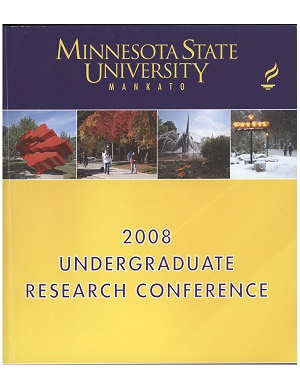Airplane Landing Performance on Contaminated Runways and Adverse Conditions
Location
CSU 201
Start Date
22-4-2008 10:30 AM
End Date
22-4-2008 12:15 PM
Student's Major
Mechanical and Civil Engineering
Student's College
Science, Engineering and Technology
Mentor's Name
Nihad E. Daidzic
Mentor's Department
Aviation
Mentor's College
Education
Description
In this research, we investigated operational landing and stopping phase of large-transport category airplanes on contaminated runways and under adverse conditions. Introduction of Heaviside step functions in the mathematical model ensures realistic time-delayed modeling of spoiler, brakes, and thrust reverse deployment. The model also accounts or variations in pilot performance and techniques. A simulation model consists of several distinct systems of simultaneous nonlinear ordinary differential equations, semi-empirical expressions, and many accompanied algebraic relationships for aerodynamic coefficients, friction data and relevant parameters. The full non-linear differential model was solved using Heun's predictor-corrector method. Different landing scenarios including dry, icy, and wet runways were simulated to obtain realistic stopping distance, speed, and deceleration histories. The model accounts for different contaminated runways scenarios, hydroplaning, wind effect and other advanced features. This mathematical model and the accompanied in house designed MATLAB® program were used as a reliable operational landing distance calculator and as an educational demonstrator to simulate the operation with limited budget. The simulation analysis showed that FAA, wet-runways correction, is not sufficient calculating safe landing distances. Parametric analysis was performed to estimate contributions or significances of various effects. Due to many uncertainties, especially in aircraft aerodynamic data, we estimated the total uncertainty of the prediction to be approximately 1 % or 100 feet landing distance whichever is higher.
Airplane Landing Performance on Contaminated Runways and Adverse Conditions
CSU 201
In this research, we investigated operational landing and stopping phase of large-transport category airplanes on contaminated runways and under adverse conditions. Introduction of Heaviside step functions in the mathematical model ensures realistic time-delayed modeling of spoiler, brakes, and thrust reverse deployment. The model also accounts or variations in pilot performance and techniques. A simulation model consists of several distinct systems of simultaneous nonlinear ordinary differential equations, semi-empirical expressions, and many accompanied algebraic relationships for aerodynamic coefficients, friction data and relevant parameters. The full non-linear differential model was solved using Heun's predictor-corrector method. Different landing scenarios including dry, icy, and wet runways were simulated to obtain realistic stopping distance, speed, and deceleration histories. The model accounts for different contaminated runways scenarios, hydroplaning, wind effect and other advanced features. This mathematical model and the accompanied in house designed MATLAB® program were used as a reliable operational landing distance calculator and as an educational demonstrator to simulate the operation with limited budget. The simulation analysis showed that FAA, wet-runways correction, is not sufficient calculating safe landing distances. Parametric analysis was performed to estimate contributions or significances of various effects. Due to many uncertainties, especially in aircraft aerodynamic data, we estimated the total uncertainty of the prediction to be approximately 1 % or 100 feet landing distance whichever is higher.
Recommended Citation
Pradhan, Saroj; Rajeev Shakya; and Juna Shrestha. "Airplane Landing Performance on Contaminated Runways and Adverse Conditions." Undergraduate Research Symposium, Mankato, MN, April 22, 2008.
https://cornerstone.lib.mnsu.edu/urs/2008/oral-session-12/6




